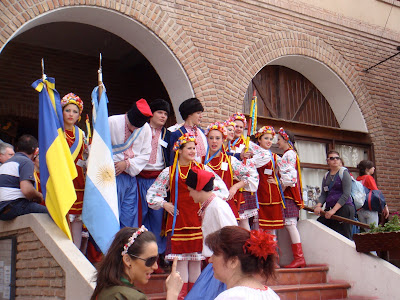Just a day ago I was in Cabo Polonio, the most isolated town of Uruguay's Atlantic coastal region. Splendidly detached from the outside by sand dunes, no roads, electricity, and other modern amenities, perfect strangers who gathered in Cabo quickly became friends. Without distractions such as televisions, the Internet, etc., we spent hours on the beaches and long nights, cooking, making tropical cocktails and drinking wine.
But now I am tired. Sitting in a hostel in Montevideo, Uruguay, waiting for my evening flight back to Buenos Aires, I am suddenly anxious to return to the United States to see my friends and family.
* * *
Tengo dos dias más en Sudamérica. Pero ya siento que ha llegado el fin de mi viaje.
Solamente hace un dia estuve en Cabo Polonio, uno de los pueblos más remotos de la costa de Uruguay. Espléndidamente aislado por las dunas, y la falta de eletricidad, calles, y otros servicios modernos, desconocidosque llegaron a Cabo se hicieron amigos rapidamente. Sin distracciónes como la tele, Internet, etc., pasamos mucho tiempo en las playas y las noches cocinando, tomando vino y haciendo cocteles tropicales.
Pero ahora estoy cansado. Me quedo en un hostel de Montevideo, Uruguay, esperando para mi vuelo esta noches, de repente me vuelvo ansioso regresar a EE.UU para ver mis amigos y familia.
Solamente hace un dia estuve en Cabo Polonio, uno de los pueblos más remotos de la costa de Uruguay. Espléndidamente aislado por las dunas, y la falta de eletricidad, calles, y otros servicios modernos, desconocidosque llegaron a Cabo se hicieron amigos rapidamente. Sin distracciónes como la tele, Internet, etc., pasamos mucho tiempo en las playas y las noches cocinando, tomando vino y haciendo cocteles tropicales.
Pero ahora estoy cansado. Me quedo en un hostel de Montevideo, Uruguay, esperando para mi vuelo esta noches, de repente me vuelvo ansioso regresar a EE.UU para ver mis amigos y familia.



















































